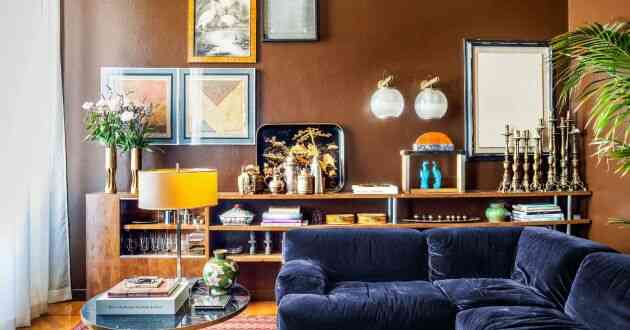Italian Interior Design: Having An Eye For Magnificent Style
- - Category: Interior Design
- - 29 Jul, 2017
- - Views: 865
- Save
Italian interior design's history is long and complex
The whole world knows that Italians are known for their great taste in food and architecture. If you couple their love for architecture with their desire to be with their families, then you can begin to comprehend the essence of Italian interior design.
A Rich History
Italian interior design’s history is long and complex. This was more of a hobby among Italian nobles back in the Roman times. The Romans introduced architectural marvels to this great people where the interiors epitomized architectural beauty, functionality and comfort. To the Romans, aesthetic appeal was a biggie but as the years passed, Italians created simpler structures that were especially built for durability.
Take a careful look at the Tuscan villas and you would see the simplistic approach that the people have come to embrace. Mediterranean beach houses that have stood for many years now inspire millions of other homes - these are proofs that the Italians did not sacrifice beauty for durability.
Contemporary Italian
Modern Italian interiors showcase stark lines. These are a bit different from the 18th and 19th century homes but there were still some aspects that have been kept for their historical value – the Italian’s love for well-lit, open spaces remained in many Italian homes. Also, the Italians’ love for the outdoors is reflected in their own homes. It is common to find big glass windows which give the visitors a good view of the garden.
The Radical Changes
There were a few things that radically changed, however. These days, interior designers are more preoccupied with the utilization of space as well as smart aesthetics. A few urban homes in Italy are small so interior designers are looking into the correct allocation of space, windows and doors in order to have a semblance of openness. Designers use a lot of tricks to enhance a given space including strategic furniture and lighting placement.
The self-contained Italian home is now calling out for the most creative solutions for aesthetic and spatial issues and Italian interior designers are responding to this call. They have presented their individualistic, bold and smart – even bordering quirky – designs that make homes interesting to the beholder.
Modern kitchens have also developed into something more livable, not just a place where chefs slaved in the past. The Italian kitchen has now evolved into a place where guests can also be entertained and where members of the household can go to during their spare time. The open space layout is also quite common in Italian interior design, with the ventilation having been improved.
Side-by-side Comparisons
To perfectly understand the transitions that have taken place, it is important to define the traditional layout for rooms and what their contemporary looks should now be.
For instance, customary Italian living rooms came with white walls and are modestly decorated and furnished. The more luxurious Tuscan manors featured artistic murals, hand-plastered walls, oil paintings, and ornate wooden furniture. Antique or heirloom pieces are mixed with the rest of the architecture such as the terracotta floor tiles, exposed wooden beams and stone walls. The Tuscan elements definitely add to the warmth of the place.
Contemporary Italian living rooms, on the other hand, focus on the open-space layout. The furnishings are sleeker, straighter and they have sophisticated yet functional curves.
The rooms for modern Italian homes are minimalistic but are abundant in natural light. Leather is a common material for seating units such as chairs and sofas. Add Murano glass lighting fixtures, traditional wall art, modern sculpture and some eclectic furniture and the look is complete.
So what is Italian interior design these days? If you want to fuse the traditional and modern styles, then you can effectively blend with the so-called transitional style. There are unifying elements to look for such as texture, the right colors, and form. Use Tuscan ceramics, find a gold gilded mirror, and mix them with modern décor and you have created the perfect fusion of the past and present in your home.


